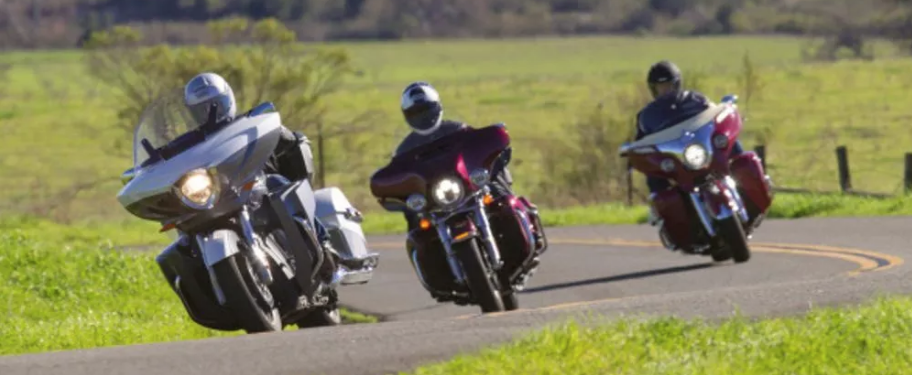
In part one of this article, we covered two common types of motorcycle accidents, along with providing some basic tips on how they can be avoided. In this article, we are going to pick up where we left off. Let’s take a look at a few more types of motorcycle crashes.
Lane Splitting
This is an accident which can occur when a motorcycle is driving on the lane line between rows of cars. Lane splitting is an action which is legal in some states while it is outlawed in others, so it is important for motorcycle riders to know whether or not it is allowed where they are riding. There are plenty of ways in which an accident can result when a motorcycle is splitting two lanes, such as a car attempting to change lanes while a motorcycle comes up from behind. Also, if traffic is congested, the tight corridor could be difficult for the rider to manage, and he or she may clip a mirror or something else sticking out from a vehicle. If lane splitting is legal where you ride, and you decide to do it, be extra aware of your surroundings and do your best to anticipate the moves of the cars around you.
Riding While Intoxicated
Of all the types of accidents on our list, this one is by far the easiest to avoid – simply put, you should not ride your motorcycle (or drive any vehicle) while intoxicated. That’s the end of the story. If you don’t get on your bike after you have been drinking, you can’t get into a crash as a result of your intoxication. Riding a motorcycle is a challenging task when sober – it should not be attempted after alcohol has been consumed. Of course, in addition to being extremely dangerous, riding your motorcycle while intoxicated is very much illegal.
Losing Control in a Corner
One of the great things about riding a motorcycle is the bike’s ability to handle turns with impressive agility. It is fun to go through a corner and come out the other side cleanly, but corners can also be the cause of many accidents. If you enter a corner too quickly, for instance, you may not be able to negotiate it before losing control of the bike. Also, the conditions you encounter will have a lot to do with your ability to maintain control all the way around a bend. There is far more traction on dry pavement than on a loose gravel surface. Asses the conditions you are facing at the moment and manage your speed accordingly before you go into a turn.
The types of motorcycle accidents listed in this article – and in part one – are just a sampling of what can take place out on the roads. In the end, the motorcycle rider can go a long way toward keeping himself or herself upright just by paying attention and riding in a responsible manner. Stay safe out there!

